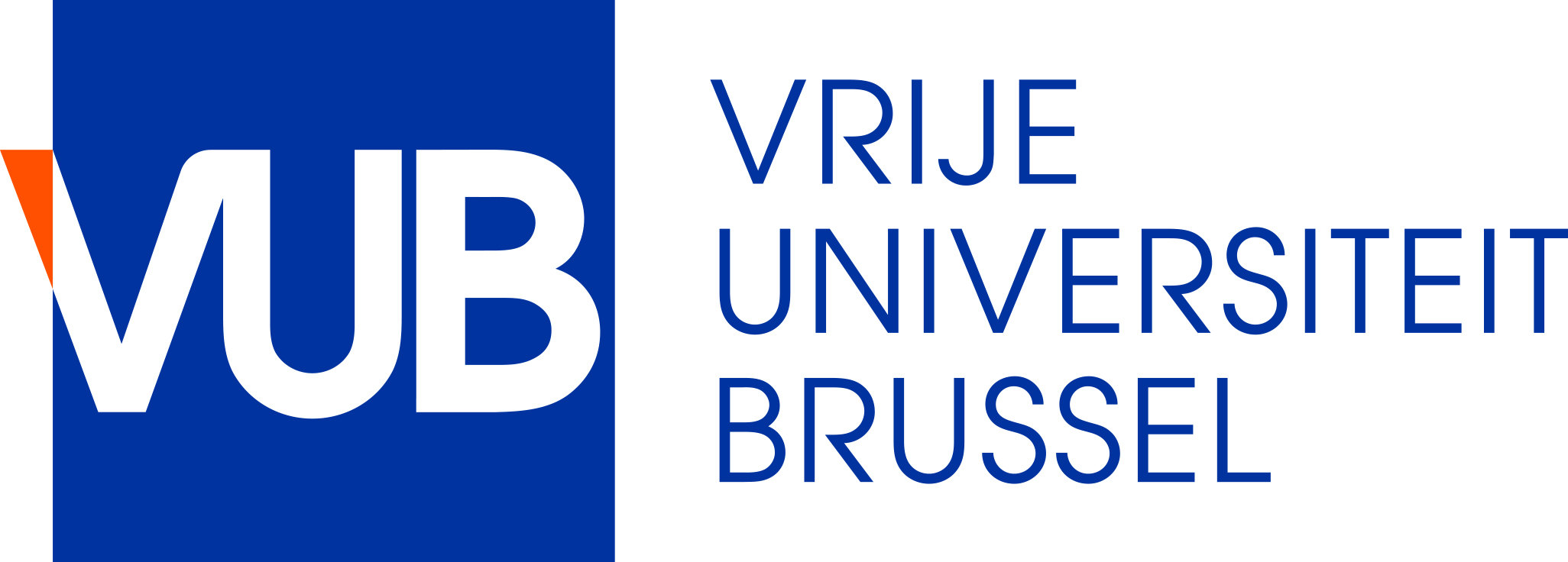Meet the jury: Slow-paced breathing: current state-of-the-art and agenda for future research, Prof Sylvain Laborde, German Sport University Cologne
You are kindly invited to the Meet the jury lecture of Prof Sylvain Laborde and two of his PhD researchers in the contect of the PhD defense of Anoushka Thoen:
Date: 8 September 2023, 16h00
Venue: Aula, Gebouw De Nayer, KU Leuven
Talk 1: Slow-paced breathing: current state-of-the-art and agenda for future research
- By Dr. Sylvain Laborde, Jury Member, German Sport University Cologne, Institute of Psychology, Department of Performance Psychology
The voluntary control of breathing, particularly slowing down its rate, has been used for thousands of years as an essential part of most meditative and relaxation practices, stemming from Eastern traditions. However, if many physical and mental health benefits have been reported from voluntary slow breathing, its underlying mechanisms remain poorly understood. Several models suggest an implication of the vagus nerve—the main nerve of the parasympathetic nervous system—in the positive therapeutic effects of voluntary slow breathing. This talk aims to introduce recent research aiming to better understand the role of the vagus nerve in slow-paced breathing, as indexed via vagally-mediated heart rate variability. Agenda for future research will be presented, spanning in particular the investigation of the sympathetic nervous system and heartbeat evoked-potentials.
About prof. Laborde
Sylvain Laborde is a Senior Lecturer at the Institute of Psychology (Department of Performance Psychology) of the German Sport University Cologne 🇩🇪, and he has been living in Germany for 15 years. He published 100+ research papers in international peer-reviewed journals, wrote 4 books, and is a keynote speaker in five languages (French, English, German, Spanish, and Italian). He completed a double degree at the University of Caen Normandy, earning a Master in Sports Sciences (2007) – with a 1-year Erasmus stay in Spain at the University of Las Palmas de Gran Canaria – and a Master in Psychology in 2010. He then earned his first PhD in Sports Sciences from the German Sport University Cologne (2011), focusing on the influence of emotions on decision-making processes in handball players. Subsequently, he completed a second PhD in Psychology (2019) at the University of Caen Normandy, where he focused on a specific relaxation technique, slow-paced breathing, and its effects on sleep, stress management, and cognitive performance. He finally received his habilitation at the German Sport University in Cologne (2021), where he developed the Vagal Tank Theory. His research focuses on heart rate variability as a psychophysiological indicator of self-regulation, stress management, and cognitive performance; the application of various breathing techniques in sports; and the influence of emotional intelligence on athletic performance. Besides his academic career, Sylvain loves cycling, singing and playing the piano, and shows great enthusiasm in sharing his research passion with a broad audience through Science Slams and live shows where he merges sport and live music performance.
LinkedIn: https://www.linkedin.com/in/sylvainlaborde/
ResearchGate: https://www.researchgate.net/profile/Sylvain-Laborde
Twitter: https://twitter.com/SylvainLaborde_
Youtube: https://www.youtube.com/channel/UCsloicuEw-uoBhA-eMmdj0g
Selected references
- Laborde, S., Zammit, N., Iskra, M., Mosley, E., Borges, U., Allen, M. S., & Javelle, F. (2022). The influence of breathing techniques on physical sport performance: a systematic review and meta-analysis. International Review of Sport and Exercise Psychology, 1-56. doi:10.1080/1750984x.2022.2145573
- Laborde, S., Allen, M. S., Borges, U., Dosseville, F., Hosang, T. J., Iskra, M., Mosley, E., Salvotti, C., Spolverato, L., Zammit, N. & Javelle, F. (2022) Effects of voluntary slow breathing on heart rate and heart rate variability: A systematic review and a meta-analysis. Neuroscience & Biobehavorial Reviews, 138, 104711.
- Laborde, S., Allen, M. S., Borges, U., Iskra, M., Zammit, N., You, M., . . . Dosseville, F. (2021). Psychophysiological effects of slow-paced breathing at six cycles per minute with or without heart rate variability biofeedback. Psychophysiology, e13952. doi:10.1111/psyp.13952
- Laborde, S., Hosang, T., Mosley, E., & Dosseville, F. (2019). Influence of a 30-day slow paced breathing intervention compared to social media use on subjective sleep quality and cardiac vagal activity. Journal of Clinical Medicine, 8. doi:10.3390/jcm8020193
- Laborde, S., Mosley, E., & Mertgen, A. (2018). Vagal Tank Theory: The Three Rs of Cardiac Vagal Control Functioning – Resting, Reactivity, and Recovery. Frontiers in Neuroscience, 12. doi:10.3389/fnins.2018.00458
- Laborde, S., Mosley, E., & Thayer, J. F. (2017). Heart rate variability and cardiac vagal tone in psychophysiological research – Recommendations for experiment planning, data analysis, and data reporting. Frontiers in Psychology. doi:10.3389/fpsyg.2017.00213
- Laborde, S., & Allen, M. S. (2016). Comment: Measurement and the interpretation of trait EI research. Emotion Review.
- Laborde, S., Dosseville, F., & Allen, M. S. (2015). Emotional intelligence in sport and exercise: A systematic review. Scandinavian Journal of Medecine & Science in Sports. doi:10.1111/sms.12510
- Laborde, S., Lautenbach, F., & Allen, M. S. (2015). The contribution of coping-related variables and heart rate variability to visual search performance under pressure. Physiolology & Behavior, 139, 532-540. doi: 10.1016/j.physbeh.2014.12.003
- Laborde, S., Raab, M., & Kinrade, N. P. (2014). Is the ability to keep your mind sharp under pressure reflected in your heart? Evidence for the neurophysiological bases of decision reinvestment. Biological Psychology, 100C, 34-42. doi: 10.1016/j.biopsycho.2014.05.003
Talk 2: Breathing and the heartbeat evoked potential
- By Caterina Salvotti, PhD researcher, German Sport University Cologne, Institute of Psychology, Department of Performance Psychology
The current talk will address breathing, the heartbeat-evoked potential (HEP), the autonomic nervous system, and their potential relationship. The HEP is considered as a marker of cortical processing of the heartbeat. The underlying mechanisms of HEP are still scarcely known, even if the involvement of vagus nerve afferent fibers has been hypothesized as a potential underlying mechanism, with HEP as a marker of vagal afferent activity.
Current literature suggests that slow-paced breathing (SPB) influences vagus nerve efferent fibers by mean of increased vagally-mediated heart rate variability, while fast-paced breathing (FPB) has been predominantly associated with the sympathetic nervous system, making these techniques relevant for general health, mental health, and sport field as well. However, the effects and underlying mechanisms of both breathing techniques need further clarification.
Referring to the neurovisceral integration model and to the current theoretical and applied knowledge about HEP, the potential relationship between breathing and HEP will be discussed, as well as how breathing could represent a tool to investigate HEP and the autonomic nervous system further. Moreover, an example of the application of SPB in a real-life sport context will be discussed.
About Caterina Salvotti
Originally from Italy, I graduated with a Master’s in Cognitive Neuroscience and Clinical Neuropsychology at the University of Padova. I am currently a PhD student at the Department of Performance Psychology of the German Sport University Cologne. My PhD project merges two topics I grew passionate about after two research stays abroad: at the University of Granada, Spain, I discovered the heartbeat-evoked potential, and during the time spent at the German Sport University Cologne, I focused on slow-paced breathing and heart rate variability. Studying and practicing Yoga just reinforced my interest in researching breathing and its effects. Thus, my PhD focuses on the relationship between breathing and the heartbeat-evoked potential.
Selected publications
- Laborde, S., Allen, M. S., Borges, U., Dosseville, F., Hosang, T. J., Iskra, M., Mosley, E., Salvotti, C., Spolverato, L., Zammit, N., & Javelle, F. (2022). Effects of voluntary slow breathing on heart rate and heart rate variability: A systematic review and a meta-analysis. Neuroscience & Biobehavioral Reviews, 138, 104711. https://doi.org/10.1016/j.neubiorev.2022.104711
- You, M., Laborde, S., Salvotti, C., Zammit, N., Mosley, E., & Dosseville, F. (2021). Influence of a Single Slow-Paced Breathing Session on Cardiac Vagal Activity in Athletes. International Journal of Mental Health and Addiction. https://doi.org/10.1007/s11469-020-00467-x
Talk 3: Influence of slow- and fast-paced breathing on the autonomic nervous system
- By Maša Iskra, PhD researcher, German Sport University Cologne, Institute of Psychology, Department of Performance Psychology
Sport performance imposes physical and psychological demands on athletes, thus requiring adequate activation of their body and mind to perform successfully. In the last decade, slow- (SPB) and fast-paced breathing (FPB) has gained increased attention in scientific and applied settings as activation-regulation strategies. Referring to the neurovisceral integration model (Thayer et al., 2009), voluntary modification of the breathing pattern is assumed to influence physiological and psychological functions through alterations in both autonomic nervous system (ANS) branches. While performance-facilitating effects of FPB interventions have been predominantly attributed to sympathetic activation, a joint analysis of both branches may be in fact required. Such a correspondence has been termed reciprocal sympathetic activation, which is characterised by sympathetic activation and parasympathetic withdrawal. However, given methodological limitations, only parasympathetic activity has been assessed during FPB. Therefore, the objective of the current project is to develop a theoretical foundation for the use of FPB as an evidence-based sport psychological intervention by testing reciprocal sympathetic activation as a potential mechanism.
This talk will focus on the currently ongoing experiment, testing the effect of paced breathing on ANS activity in active sport participants. In a within-subject design, the participants are instructed to breathe abdominally at 6, 15, 25, 35, 45, and 55 cycles per minute, with conditions being randomized. Heart rate variability (operationalized with the root mean square of successive differences – RMSSD) and pre-ejection period values are collected as indices of parasympathetic and sympathetic activity, respectively. Breathing discomfort level is assessed using the Modified Borg scale, and breathing depth is evaluated to ensure a constant depth level. Data will be analyzed using a repeated-measures ANOVA.
Data collection is currently ongoing. The preliminary results will be discussed in relation to the neurovisceral integration model and the potential application of FPB to sport.
About Maša Iskra
Originally from Slovenia, I completed my Bachelor’s degree in Psychology and Sport Management at the Manchester Metropolitan University. After undertaking an internship at the German Sport University (GSU) in Cologne, under the supervision of Dr. Laborde, I decided to pursue further my interest in mind-body connection in the sport context. In 2022, I graduated with a Master’s degree in Sport and Exercise Psychology and conducted a meta-analysis on the effects of breathing techniques on sport performance as part of my Master thesis project. Currently, I am pursuing a PhD at the Department of Performance Psychology of the GSU. My research topics encompass breathing, its effects on the autonomic nervous system, and embodied cognition.
Selected publications
- Voigt, L., Friedrich, J., Grove, P., Heinrich, N., Ittlinger, S., Iskra, M., Koop, L., Mishirev, A., Sparascio, S., & Raab, M. (2023). Advancing judgment and decision-making research in sport psychology by using the body as an informant in embodied choices. Asian Journal of Sport and Exercise Psychology. https://doi.org/10.1016/j.ajsep.2022.09.006
- Michirev, A., Iskra, M., Voigt, L. (2023). Deine Finger sind kleine Mathegenies! In In-mind.
- Laborde, S., Zammit, N., Iskra, M., Mosley, E., Borges, U., Allen, M. S., & Javelle, F. (2022). The influence of breathing techniques on physical sport performance: a systematic review and meta-analysis. International Review of Sport and Exercise Psychology, 1-56. https://doi.org/10.1080/1750984X.2022.2145573
- Laborde, S., Allen, M. S., Borges, U., Dosseville, F., Hosang, T. J., Iskra, M., Mosley, E., Salvotti, C., Spolverato, L., Zammit, N., & Javelle, F. (2022). Effects of voluntary slow breathing on heart rate and heart rate variability: A systematic review and a meta-analysis. Neuroscience & Biobehavioral Reviews, 104711. https://doi.org/10.1016/j.neubiorev.2022.104711
- You, M., Laborde, S., Zammit, N., Iskra, M., Borges, U., Dosseville, F. (2021). Single Slow-Paced Breathing Session at Six Cycles per Minute: Investigation of Dose-Response Relationship on Cardiac Vagal Activity. International Journal of Environmental Research and Public Health, 18(23), 12478. https://doi.org/10.3390/ ijerph182312478
- Laborde, S., Allen, M. S., Borges, U., Iskra, M., Zammit, N., You, M., Hosang, T., Mosley, E., Dosseville, F. (2021). Psychophysiological effects of slow-paced breathing at six cycles per minute with or without heart rate variability biofeedback. Psychophysiology, e13952. doi:10.1111/psyp.13952
- Laborde, S., Iskra, M., Zammit, N., Borges, U., You, M., Sevoz-Couche, C., & Dosseville, F.(2021). Slow-Paced Breathing: Influence of Inhalation/Exhalation Ratio and of Respiratory Pauses on Cardiac Vagal Activity. Sustainability, 13(14), 7775
- You, M., Laborde, S., Zammit, N., Iskra, M., Borges, U., Dosseville, F., & Vaughan, R. S.(2021). Emotional Intelligence Training: Influence of a Brief Slow-Paced Breathing Exercise on Psychophysiological Variables Linked to Emotion Regulation. International Journal of Environmental Research and Public Health, 18(12), 6630.
More info: Anoushka<dot>Thoen<at>kuleuven<dot>be
PRACTICAL INFO
-
DATE08 September, 2023
-
LOCATION
 Gebouw De Nayer
Gebouw De Nayer
Tervuursevest 101
3001 Heverlee
Aula -
TARGET GROUPPhD postdoc ZAP
-
LANGUAGE EVENTENGLISH




